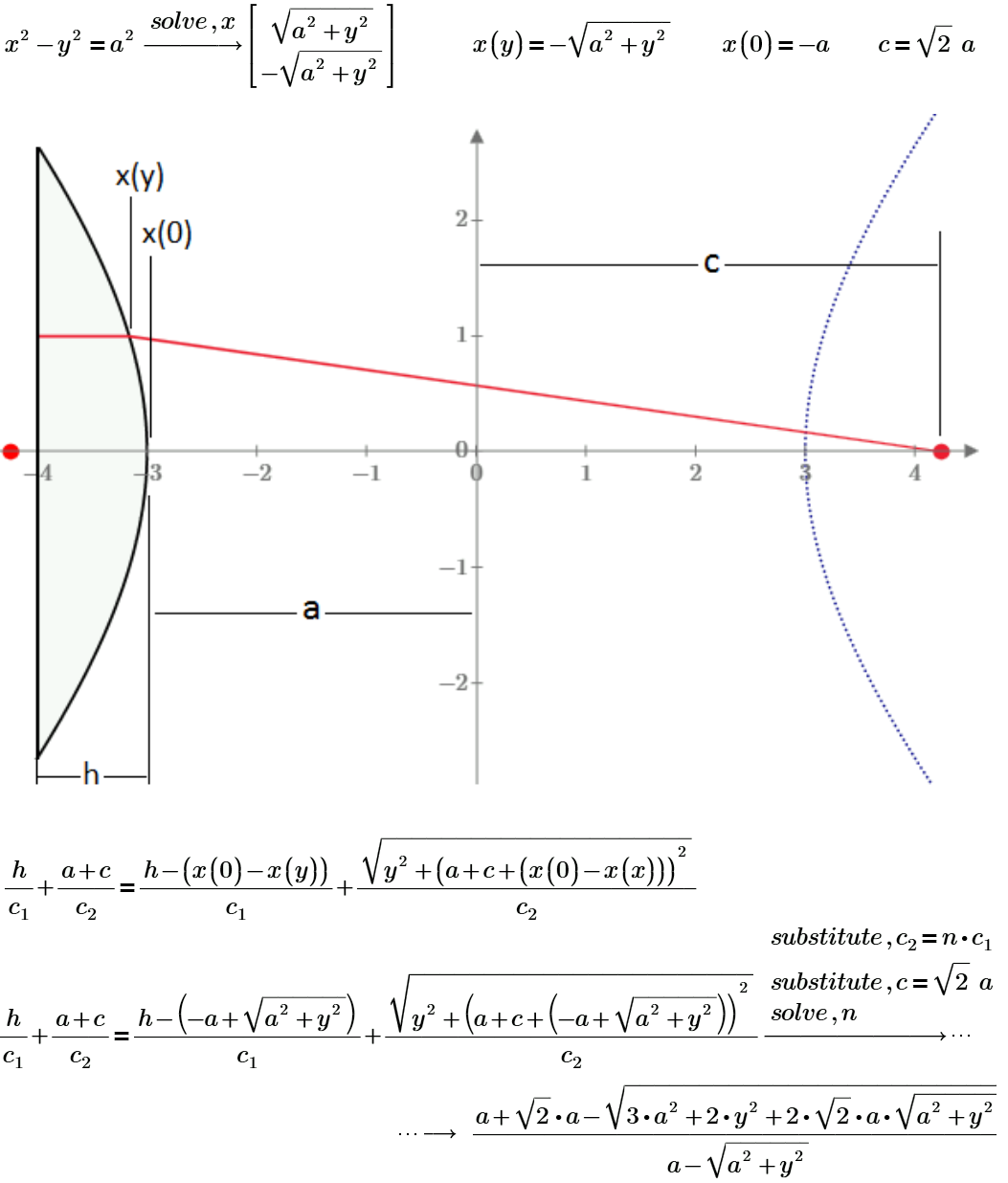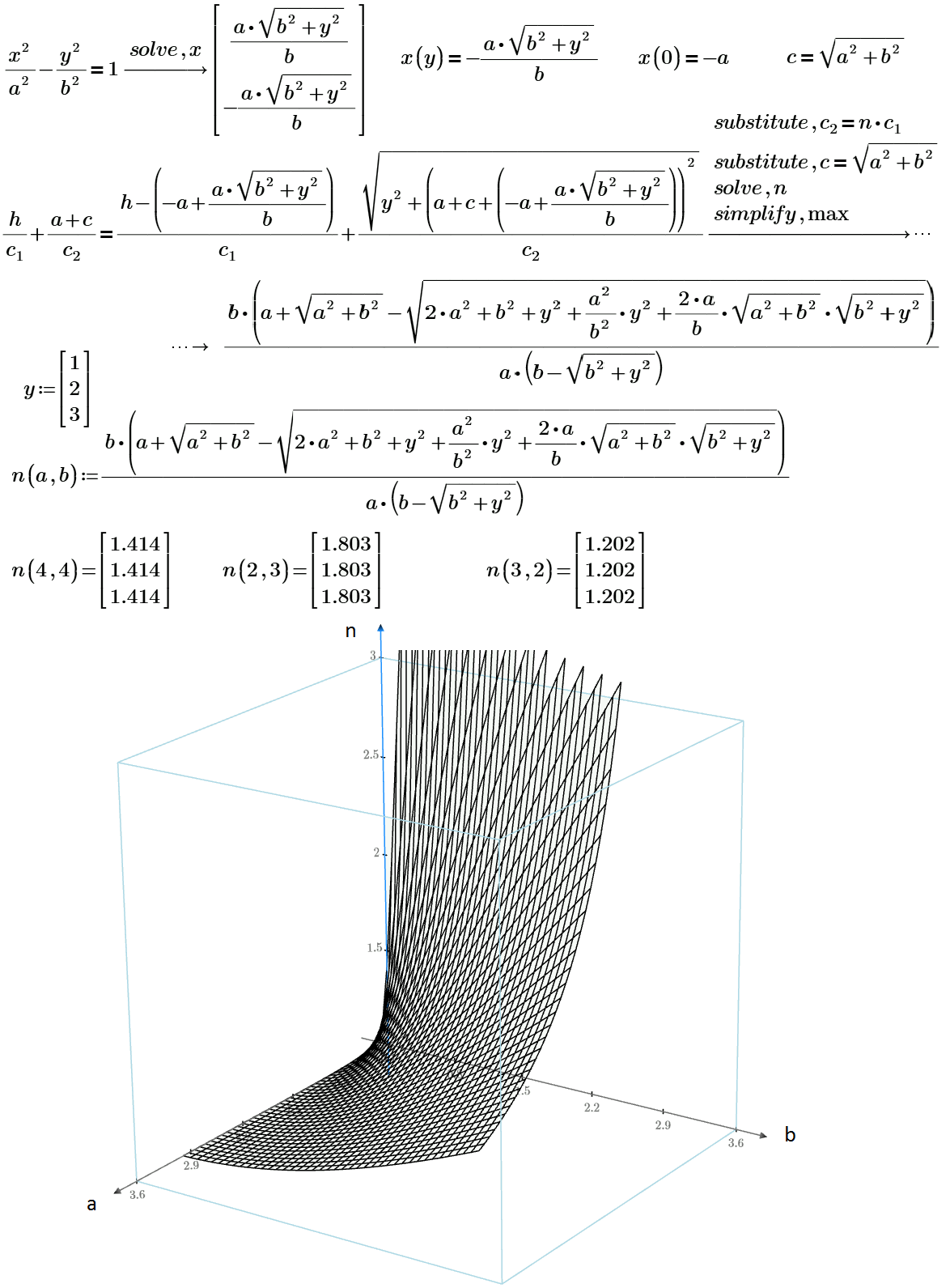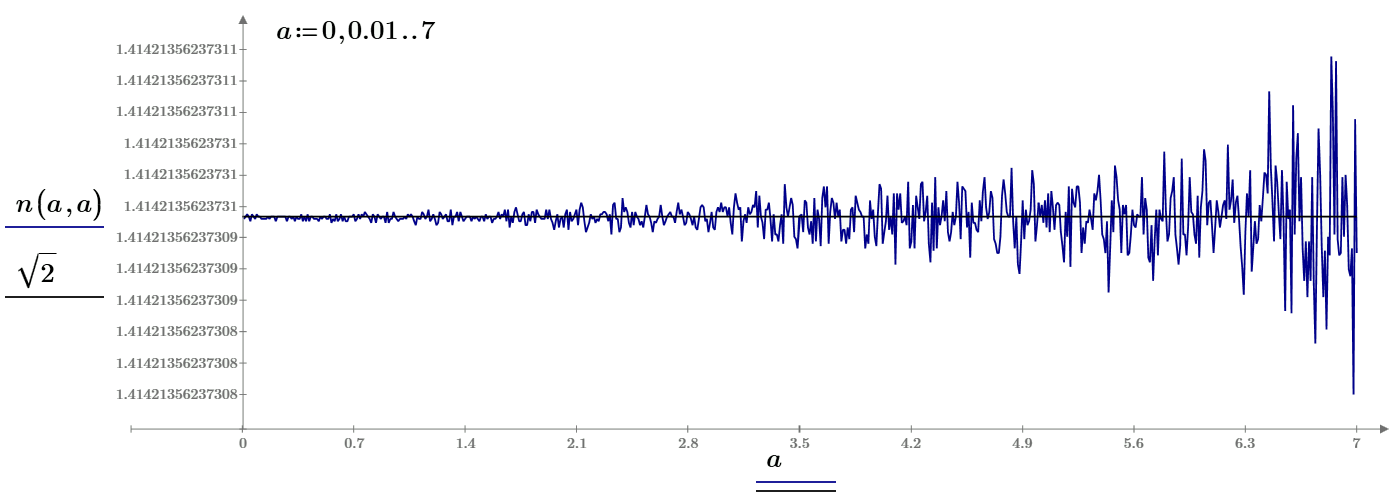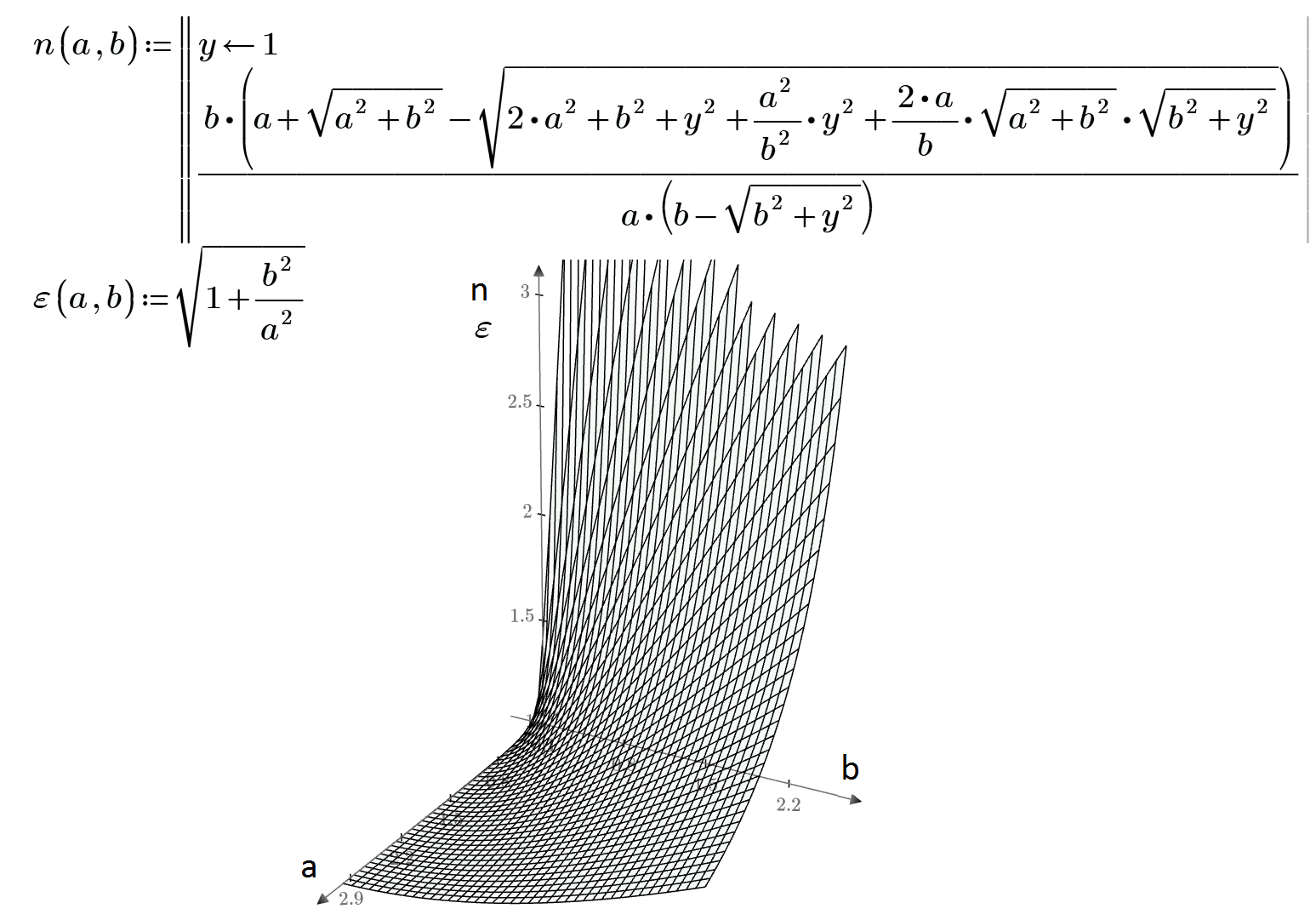Community Tip - Your Friends List is a way to easily have access to the community members that you interact with the most! X
- Subscribe to RSS Feed
- Mark Topic as New
- Mark Topic as Read
- Float this Topic for Current User
- Bookmark
- Subscribe
- Mute
- Printer Friendly Page
One optic problem - one physic constant n
- Mark as New
- Bookmark
- Subscribe
- Mute
- Subscribe to RSS Feed
- Permalink
- Notify Moderator
One optic problem - one physic constant n
At which value n the optic focus of lens is a geometric focus too?
See please two pictures and two Prime 3.1 sheets in attach.


Solved! Go to Solution.
Accepted Solutions
- Mark as New
- Bookmark
- Subscribe
- Mute
- Subscribe to RSS Feed
- Permalink
- Notify Moderator
- Mark as New
- Bookmark
- Subscribe
- Mute
- Subscribe to RSS Feed
- Permalink
- Notify Moderator
- Mark as New
- Bookmark
- Subscribe
- Mute
- Subscribe to RSS Feed
- Permalink
- Notify Moderator
I have the function but with y as one more argument.

How can I delete y? Substitute y=1?
- Mark as New
- Bookmark
- Subscribe
- Mute
- Subscribe to RSS Feed
- Permalink
- Notify Moderator
the function n (a, b, y) has a pole at y = 0. So you have to exclude the pole in order to draw a graph.

- Mark as New
- Bookmark
- Subscribe
- Mute
- Subscribe to RSS Feed
- Permalink
- Notify Moderator
Yes - a pole! How can I show that n(a, y)=sqrt(2)?



- Mark as New
- Bookmark
- Subscribe
- Mute
- Subscribe to RSS Feed
- Permalink
- Notify Moderator
How cam I delete in n(a, b) function? One way - insert 1 on the place y?

- Mark as New
- Bookmark
- Subscribe
- Mute
- Subscribe to RSS Feed
- Permalink
- Notify Moderator
> How cam I delete in n(a, b) function? One way - insert 1 on the place y?
Yes, or in Prime you better use NaN which unfortunately is not valid in Mathcad 15's 3D plots
- Mark as New
- Bookmark
- Subscribe
- Mute
- Subscribe to RSS Feed
- Permalink
- Notify Moderator
Thanks, Werner, I knw it.
But how we can show analytical not by plot that n(a)=sqrt(2)

- Mark as New
- Bookmark
- Subscribe
- Mute
- Subscribe to RSS Feed
- Permalink
- Notify Moderator
> Thanks, Werner, I knw it.
So why did yo ask how to get rid of the pole in the plot??
> But how we can show analytical not by plot that n(a)=sqrt(2)
Doesn't your plot show that it isn't exactly sqrt 2 ??
EDIT: Looks that what we see here are numerical round offs.
I was not able to make Mathcad do the symbolic simplifications with general varaibles but at least for specific values (as long as a=b>=0):

- Mark as New
- Bookmark
- Subscribe
- Mute
- Subscribe to RSS Feed
- Permalink
- Notify Moderator

- Mark as New
- Bookmark
- Subscribe
- Mute
- Subscribe to RSS Feed
- Permalink
- Notify Moderator
Wasn't your question
> > But how we can show analytical not by plot that ...
- Mark as New
- Bookmark
- Subscribe
- Mute
- Subscribe to RSS Feed
- Permalink
- Notify Moderator
It is a question!!!
I am preparing an article "Second optical property of hyperbola".
Would you like be a coauthor?
In this article
https://cdn2.mti.edu.ru/cloudofscience/CoS_3/CoS_3_396.pdf
I have only pointed "Thanks, Werner, for help!"
- Mark as New
- Bookmark
- Subscribe
- Mute
- Subscribe to RSS Feed
- Permalink
- Notify Moderator
No, I was just confused that you closed the thread even though no full symbolic solution to your question was found.
- Mark as New
- Bookmark
- Subscribe
- Mute
- Subscribe to RSS Feed
- Permalink
- Notify Moderator
Werner Exinger написал(а):
Wasn't your question
> > But how we can show analytical not by plot that ...

- Mark as New
- Bookmark
- Subscribe
- Mute
- Subscribe to RSS Feed
- Permalink
- Notify Moderator
???
I don't see the correlation to n(a,b)=epsilon(a,b) for y=1, which is what you wanted to show (or at least thats what I got the impression you wanted to show with your plot).
Maybe I am missing the point!?
- Mark as New
- Bookmark
- Subscribe
- Mute
- Subscribe to RSS Feed
- Permalink
- Notify Moderator
It is a new solution
- Mark as New
- Bookmark
- Subscribe
- Mute
- Subscribe to RSS Feed
- Permalink
- Notify Moderator
ValeryOchkov написал(а):
Werner Exinger написал(а):
Wasn't your question
> > But how we can show analytical not by plot that ...








